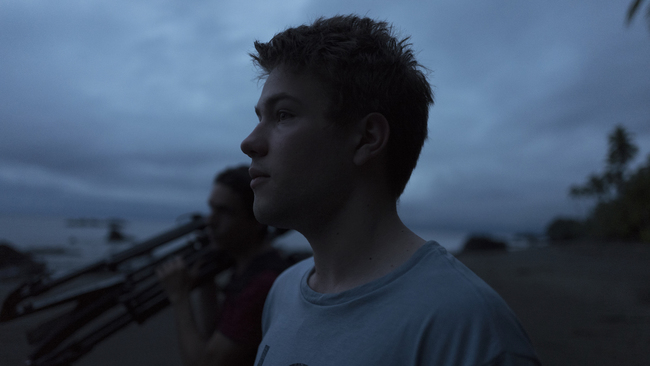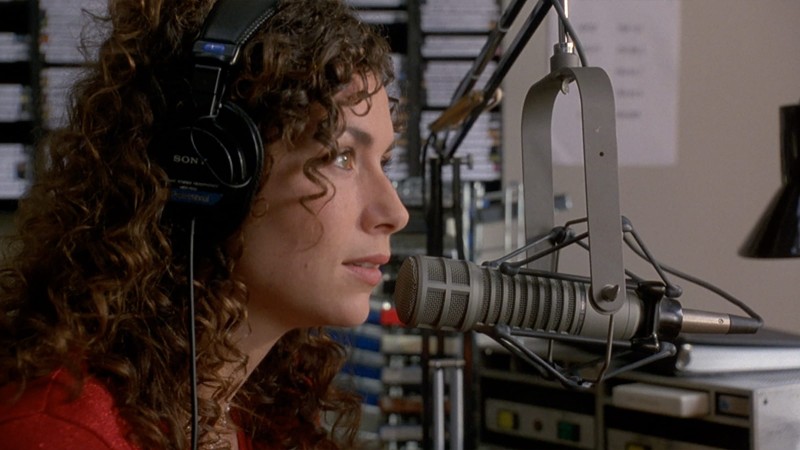Mysterious Impressions: Connor Jessup on Apichatpong Weerasethakul

Canadian filmmaker and actor Connor Jessup first encountered the mind-altering visions of Thai director Apichatpong Weerasethakul when he was a teenager, and he’s been hooked ever since. With performances in television shows like the Emmy-nominated American Crime and the Steven Spielberg–produced Falling Skies already under his belt, the twenty-three-year-old Jessup has recently begun to turn his attention behind the camera, making films that demonstrate the profound influence Apichatpong’s ethereal style has had on him while also establishing his own formidable talents as a writer, director, and editor. His short films, Boy (2015) and Lira’s Forest (2017)—the latter of which premiered at the Toronto International Film Festival last year—are metaphysical meditations marked by an acute sensitivity to the natural world and a rich interplay of sound and image.
For the latest episode of Meet the Filmmakers, an original series on the Criterion Channel on FilmStruck, Jessup got a chance to train his camera on his filmmaking idol, traveling to the Colombian jungle to shoot the intimate documentary A.W. A Portrait of Apichatpong Weerasethakul. The result is a rare and disarmingly lyrical profile of one of the most revered artists in contemporary cinema. Next Tuesday, alongside A.W., you can watch a pairing of Lira’s Forest with Apichatpong’s acclaimed Tropical Malady (2004), streaming in our latest Tuesday’s Short + Feature program. In anticipation of his debut on the Channel, I spoke with Jessup about his experiences as an emerging filmmaker and his collaboration with Apichatpong, who is known among friends and fans as “Joe.”
When did you first come across Apichatpong’s work, and what did it feel like to watch one of his films?
The first one I saw was Tropical Malady, when I was fifteen or sixteen. Uncle Boonmee [Who Can Recall His Past Lives] (2010) had just won the Palme d’Or at Cannes, so there was a lot of attention on him. I found the first movie of his that I could get my hands on. I’ve had this experience now with all of his films, to one degree or another, and it repeats itself every time, but the first time is something special: this feeling of being overwhelmed but also loved. If you compare his work to that of someone like Tsai Ming-liang, you see there is no austerity in what Joe does. It’s very minimal, very oblique, very warm, and there is this mix of having no idea what’s going on with this feeling of it being a friend who is doing this to me.
Has the experience of absorbing his films emotionally before you try to interpret them informed the way you think about making your own work?
When you grow up with the American way of thinking about movies, it’s kind of ingrained in you that there’s a certain amount of narrative, emotional, and physical logic that has to apply to filmmaking. There’s also an image of control. This idealization of people like Stanley Kubrick or David Fincher—whether they’re true or not, there are these mythic images of men who exert almost mathematical control over everything they make. But with someone like Joe, when you watch his movies, at least the last five or six, you realize this impression of total control is an illusion. You realize that they’re not these intricately created puzzles that have been prefabricated. But the impression of precision comes with how relentlessly honest he is with his own instincts.
I was talking to Joe’s editor, Lee [Chatametikool], and I asked what he thought might surprise people about Joe and his process. He told me that what would be most surprising is how many things are in his movies just because they thought it would be funny. I think there’s a tendency in Western criticism to see his films as these mystery boxes, where every single block and piece is deep with unknowable mystery. And there’s no harm in writing like that, but it’s curious to know that it’s probably not the case most of the time.
How did you first meet Apichatpong?
I met him a few years ago, after I made a short film called Boy. I sent him an e-mail with a link to the movie, and I wrote him and said that his films were very important to me, that he didn’t have to watch my film or respond, but that I just felt like I needed to send it. And then he replied, like, an hour later and was really kind and generous and we just started writing back and forth. We met at TIFF [Toronto International Film Festival] that fall and I kept bumping into him in different places, so I got to know him in little chunks.
How did you conceive of the form you wanted the documentary to take? The result feels less like a conventional filmmaker portrait and more like one of his movies.
The form was more of a reaction to the circumstances than something that was premeditated. We were shooting in a country that neither of us knew very well. He’d been there for a couple of months, but he extended his trip by a week in order for us to shoot, so it wasn’t like he was in the middle of production and we were just going to be a bug on the wall. Basically, we worked together.
Even if they’re really well done, I’m always a little bored with movies about filmmakers or artists that play out like textbooks. I’m a little put to sleep by that. With someone like Joe, his work and worldview don’t really intersect with that way of looking at things. Also, Joe wasn’t that interested in talking about his films in a specific way. It’s not like he’s a recluse; he does interviews, there are books about him, he gives master classes where he talks about his methods and specific films. We were trying to find something, even if it was small or in a minor key, that was fresh about him. We never tried to imitate his style, but a lot of it comes from the fact that he is so much like his films. He speaks very slowly. He considers things. So to a certain degree that forces the style of the film.
You’re present in much of the film. How did it feel to have his camera turned on you?
He takes thousands of photos every week, and he loves these little video cameras because they can slip into his pocket and he can shoot anything he wants whenever he wants. It seems almost automatic for him. So to be on the other side of that was, beyond being helpful for what we were trying to make, personally pretty moving.

Can you talk about your short film Lira’s Forest? Where did the idea for it come from, and how did you envision the tone and texture?
I really wanted to make something at night, and I wanted to make something about the connection between death and the natural world, to try and present an image of a person dying where they were part of the natural scenery. I get frustrated sometimes with movies, especially with North American movies, that present nature as a stage for action to take place on, so I wanted to do something that took a normally very dramatic event and make it almost a prop in this natural setting.
I read an interview in which you said that you were interested in films about “small gestures and gentle rhythms.” That felt like a perfect way to capture the essence of Lira’s Forest. And a lot of that gentle feeling comes through the sonic elements of the film.
I struggle with sound so much. I think it’s because I had a whole bunch of ear infections when I was a kid, so I was partially deaf for a while, and because of that I developed a really bad speech impediment, which I had until I was eleven or twelve. I think that’s also connected to the fact that I have no rhythm, no sense of pitch, and no sense of music at all. I’m the least musical, least graceful person you could possibly meet. But the more I make movies and the more I watch movies, the more I realize that sound is really everything, especially when you’re making movies where you’re not cutting very much, where your average shot is like ten, twenty, or thirty seconds. In that shot you’re making one picture choice but also about ninety-five sound choices.
Joe’s movies are obviously an enormous lesson in that because, if anything, his sense of sound is even more acute than his sense of picture, and you realize the rhythm, taste, tone—all these things are dependent on sound. Editing Lira’s Forest, which I did myself, took about four and a half, five months, because I was trying to get the picture right but was also imagining what I could possibly do with sound. When Joe edits he works with his editor and sound designer at the same time; it’s a parallel process, which I think comes with a financial cost, unfortunately, but makes so much sense to me. Especially with a film like Lira, which is ninety-percent sound, and basically everything you’re hearing except for the dialogue is not location sound but fabricated sound. When you have this blank canvas it becomes really intimidating.
Can you tell me more about your attraction to stories of the afterlife, ghosts, and memory?
I’ve always loved ghosts, and I’ve always felt like ghosts are particularly cinematic or connected to movies in a way that they aren’t to any other art form. Movies are literally light reanimating the past, which also could function as a definition of ghosts. Joe’s work is a great example of that. If you’re making movies and you’re not interested in memory, it’s a bit strange to me. I always feel more attracted to these kinds of stories than to making a movie about current affairs—not that those movies can’t be great or beautiful or necessary, but personally I feel those interests don’t really relate to the movies.
I know we have a common love for Phantom Thread, and in that film there’s an amazing scene where [the protagonist] sees his mother’s ghost in her wedding dress in the corner of the room. In that moment you realize this whole movie you’ve been watching is a ghost story—but it would still be that even if this scene didn’t exist. And then you realize that most movies, or most good movies, are like that—there’s this feeling of the past that comes through images and sounds, with all the component parts of the movie somehow holding sway over what you’re seeing.



